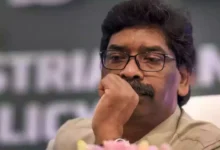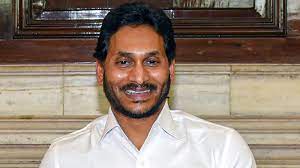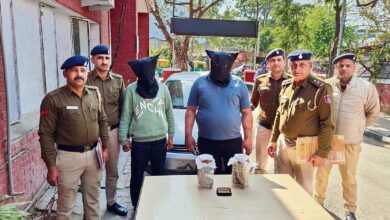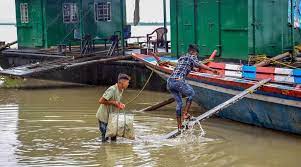Real fight for second place in TN, with the DMK-led coalition leading
In an attempt to win over voters, political party candidates and campaigners in Tamil Nadu are battling the heat as the state prepares to cast its first Lok Sabha ballot on April 19. The state’s elections are sometimes compared to a circus, but this time there is an unusual atmosphere around them. In addition to the traditional suspects, the BJP is projecting itself as a powerful force. As a candidate from the Coimbatore seat, K. Annamalai, the party’s state president, is optimistic that the party will get more than 20 percent of the vote.
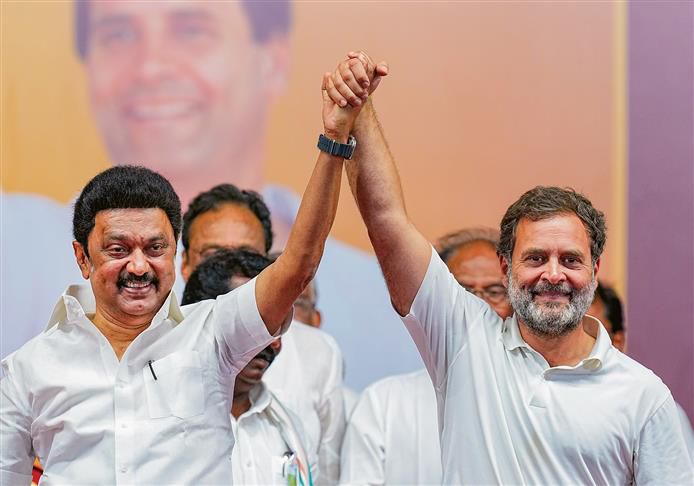
The DMK-led governing coalition is expected to win handily, according to surveys, but the actual race seems to be for second place. But even this impression could be a story that the BJP has written. It’s a four-cornered race, with the AIADMK-led coalition and the Tamil nationalist party Naam Thamizhar also participating.
While the AIADMK and the BJP broke up in September of last year, the DMK has continued to form alliances with the Left, the Congress, Viduthalai Chiruthaigal Katchi, the MDMK, and a number of other parties. After Annamalai reportedly made derogatory statements regarding AIADMK chief minister J Jayalalithaa and DMK founder CN Annadurai, a rift developed. MG Ramachandran (MGR) named his party after his mentor, Anna, when he made the decision to quit the DMK. And so was created Anna Dravida Munnetra Kazhagam. Later on, the organization was renamed as the All India (Anaithu Indhiya) Anna Dravida Munnetra Kazhagam, or AIADMK. The party could not afford to remain silent in the face of comments that denigrated Anna, given this history. The AIADMK responded by requesting that Annamalai be replaced in order for the coalition to remain together. However, the AIADMK eventually left because the BJP high command would not budge.
Both the BJP and the AIADMK worked hard to form reliable coalitions after the rupture. The Social Democratic Party of India (SDPI), Puthiya Thamizhagam, and DMDK (Desiya Murpokku Dravida Kazhagam) have allied with the AIADMK. However, the BJP has forged an alliance with a number of smaller parties, including Pattali Makkal Katchi, the Tamil Maanila Congress, and Amma Makkal Munnetra Kazhagam, a dissident faction of the AIADMK founded by TTV Dhinakaran, the nephew of VK Sasikala, a close ally of Jayalalithaa. Another prominent AIADMK rebel, O Panneerselvam, would run as an independent with support from the BJP-led front.
Along with taking on the DMK-led front, both fronts have been fiercely pursuing each other since the inception of these coalitions. According to Annamalai, the AIADMK would vanish after June 4 and its members will unite behind Dhinakaran. Leaders of the AIADMK have responded with scathing remarks; Edappadi Palaniswami, the party’s general secretary and a former chief minister, has even advised Annamalai to watch what he says.
In Tamil Nadu, the contest between the AIADMK and the BJP is the main attraction, but nationally, this election is about the BJP’s attempt to hold onto power. Author of Karunanidhi: A Life AS Panneerselvan states, “The perception that there is a fight for second place between the AIADMK and the BJP is primarily due to the splintering within the former.” “The DMK had two significant transition points,” he clarifies. One occurred in 1969 after the death of Annadurai, when Nedunchezhiyan and Karunanidhi vied for the party’s leadership. Within fifteen days, this was remedied. The second occurred upon the death of Karunanidhi, and it too was a seamless transfer. The AIADMK, on the other hand, has gone through two traumatic transitions. One was upon MGR’s passing; the succession dispute took almost two years to settle. The other occurred after Jayalalithaa passed away, and the nature of the consolidation is unknown.
Following Jayalalithaa’s demise, Palaniswami, who was able to seize leadership of the party, removed three notable figures from the AIADMK: Sasikala, Dhinakaran, and Panneerselvam. The trio is from the influential Thevar neighborhood. Palaniswami seems to have led the Gounder community, which he is a member of, in consolidating their support.
“There are concerns regarding Palaniswami’s ability to lead.” Nobody can predict how this will turn out, according to Panneerselvan. The AIADMK’s internal conflicts and infighting are the reason for any notion of a race for second place. How the AIADMK will recreate itself may be a difficulty, he continues.
Senior writer Durai Karuna, who has covered AIADMK events extensively, agrees that the party may consolidate in the case of an election loss but does not think the AIADMK would vanish as Annamalai suggests. He said the AIADMK would be well-positioned because of its organizational structure and cadre base, which the BJP cannot match.
It’s true that the BJP is making every effort to strengthen its position and image in Tamil Nadu. For the time being, the party is trying to make perceptions into reality by using a range of tactics to transform the talk into votes. Among these include fielding well-known candidates in the polls and having Prime Minister Narendra Modi, along with other national leaders, campaign in the state more than six times. It remains to be seen if these tactics will be effective, and the answer will become clear on June 4.


